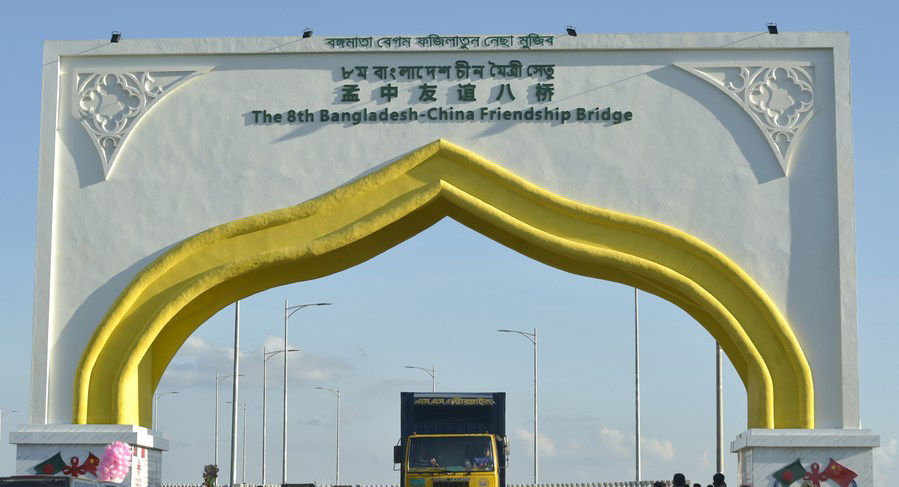
Bangladesh
2023-07-28

Postdoctoral Fellow at the Center for Global Asia
In 2022, the Center for Global Asia (CGA) commenced a project on the “BRI and South Asia” to analyze the impact and connections of the Belt and Road Initiative (BRI) in the South Asian region. The project is being generously funded by a grant from the Henry Luce Foundation.
Since its launch in 2013, China’s Belt and Road Initiative has received a lot of attention because of its engagement in infrastructure development in the host countries and the loans that were made to pay for it. There are also diverse voices and discourses on the BRI, which, being a Chinese initiative, is external to the host countries, and these voices are given prominence in the project. Interestingly, what has been said and written on the BRI’s involvement and projects has generally been negative.
Against this backdrop, the CGA’s “BRI and South Asia” project attempts to provide an alternative voice to the existing discourse on BRI-related commentary. It attempts to counter this narrative by identifying domestic voices from within the host countries. Thus, one of the objectives of this project is to compile information from vernacular sources, both human and textual. Compiling a bibliographic database containing local literature on the BRI would enable the Center to achieve this objective. Interviews and other media form the second activity that is helping to achieve the first objective. Currently, the information for the database comes from three countries: Sri Lanka, Pakistan and Nepal. The Center intends to expand the research and data collection to the remaining BRI member states in South Asia.
The second objective of this project is to prepare a database of information about various aspects of the Belt and Road Initiative’s engagement with South Asian countries. Two sections of this project, the timelines and the archival material, are helping to achieve this objective. The section on the timeline describes each country’s engagement with the BRI since its inception. Thus far, we have timelines for three South Asian countries, Sri Lanka, Pakistan and Nepal.
The bibliographic database includes literature from vernacular sources, which can be grouped into three categories: literature that authors from host countries have published on the BRI both locally and internationally; literature that has been published locally, whether academic literature or newspaper articles; and lastly, sources in local languages. This is an important source of information to share with the international community, as it contains the domestic voices and what people from within the host countries have to say about the Belt and Road Initiative and the various projects that countries have undertaken. Making literature from vernacular languages accessible in the English language can assist in countering misconceptions and alleviating misinformation about BRI-related projects in South Asia.
I have conducted interviews with academics and policymakers on various topics related to each host countries’ engagement with the BRI. Thus far I have spoken to Dr Liaqat Ali Shah, Head of Policy, Centre for Excellence for the China-Pakistan Economic Corridor, Pakistan; Mr Umesh Moramudali, Lecturer at the Department of Economics, University of Colombo; Mr Thilina Panduwawala, Head of Economic Research at Frontier Research, Sri Lanka; Admiral (Prof.) Jayanath Colombage, Former Secretary, Ministry of Foreign Affairs, Sri Lanka, and incumbent Ambassador of Sri Lanka to the Republic of Indonesia; and Professor Lailufar Yasmin, Professor and Chairperson of the Department of International Relations at the University of Dhaka, Bangladesh, to name just a few. The topics we have discussed range from overviews on their country’s involvement with the BRI to more specific information on particular projects like the China-Pakistan Economic Corridor (CPEC) and the Hambantota Port.
The interviews and blogs for Bangladesh, Pakistan 和 Sri Lanka can be accessed on the CGA website.
The section on the timelines visually depicts the chronology of each country’s engagement with the BRI. For example, in the case of Sri Lanka, the timeline commences when Sri Lanka became a founding member of the BRI in 2013. The timelines also provide details on when a country commenced a certain project with the BRI, the funding received, and the source of that funding.
This component provides local material from the first decade of the BRI, i.e. 2013 to 2023. It will include printed material such as posters, brochures, and other visual materials on any events and media that have been published on the BRI. This will be a useful source of information in the future, as researchers can identify the types and nature of the BRI-related events that were undertaken.
邮箱:shanghai.cga@nyu.edu
电话:+86 (21) 20595043
微信公众号:NYUShanghaiCGA
地址:
上海市浦东新区杨思西路567号
W822室

© 2024 All Rights Reserved